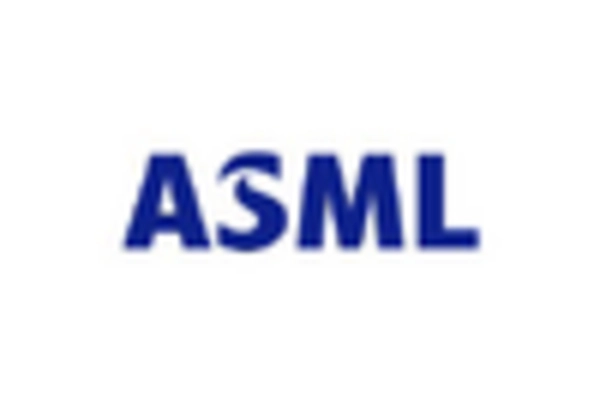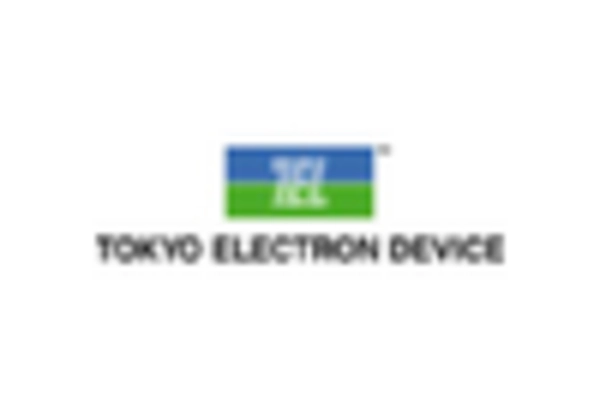Technological Advancements
The Semiconductor Wafer Fab Equipment Market is experiencing rapid technological advancements that are driving demand for more sophisticated manufacturing processes. Innovations in equipment design, such as the introduction of extreme ultraviolet lithography (EUV), are enabling manufacturers to produce smaller and more efficient chips. This trend is reflected in the increasing investments in R&D, with expenditures reaching approximately 20 billion USD in recent years. As semiconductor devices become more complex, the need for advanced wafer fabrication equipment becomes paramount, suggesting a robust growth trajectory for the industry.
Increased Focus on Data Centers
The Semiconductor Wafer Fab Equipment Market is benefiting from the heightened focus on data centers and cloud computing. As businesses and consumers alike demand more data storage and processing capabilities, the need for advanced semiconductors is growing. Data centers are increasingly reliant on high-performance chips, which drives the demand for cutting-edge wafer fabrication technologies. Market analysis suggests that the data center market could exceed 200 billion USD by 2026, indicating a substantial opportunity for the Semiconductor Wafer Fab Equipment Market to expand in response to this trend.
Expansion of Electric Vehicle Market
The Semiconductor Wafer Fab Equipment Market is poised for growth due to the expansion of the electric vehicle (EV) market. As automakers increasingly adopt semiconductor technologies for electric drivetrains, battery management systems, and advanced driver-assistance systems (ADAS), the demand for specialized wafer fabrication equipment is expected to rise. Recent estimates suggest that the EV market could reach a valuation of over 800 billion USD by 2027, which will likely necessitate significant investments in semiconductor manufacturing capabilities. This trend indicates a promising outlook for the Semiconductor Wafer Fab Equipment Market.
Government Initiatives and Investments
The Semiconductor Wafer Fab Equipment Market is being bolstered by various government initiatives aimed at enhancing domestic semiconductor manufacturing capabilities. Governments are recognizing the strategic importance of semiconductor production and are investing heavily in infrastructure and incentives to support local manufacturers. Recent policy measures in several countries have allocated billions of dollars to boost semiconductor fabrication facilities. This proactive approach is likely to stimulate growth in the Semiconductor Wafer Fab Equipment Market, as increased funding translates into enhanced manufacturing capabilities and technological advancements.
Rising Demand for Consumer Electronics
The Semiconductor Wafer Fab Equipment Market is significantly influenced by the surging demand for consumer electronics. With the proliferation of smartphones, tablets, and smart home devices, the need for high-performance semiconductors is escalating. Market data indicates that the consumer electronics sector accounts for nearly 30% of the total semiconductor market, which in turn drives the demand for wafer fabrication equipment. As manufacturers strive to meet this demand, investments in advanced fabrication technologies are likely to increase, further propelling the growth of the Semiconductor Wafer Fab Equipment Market.















Leave a Comment